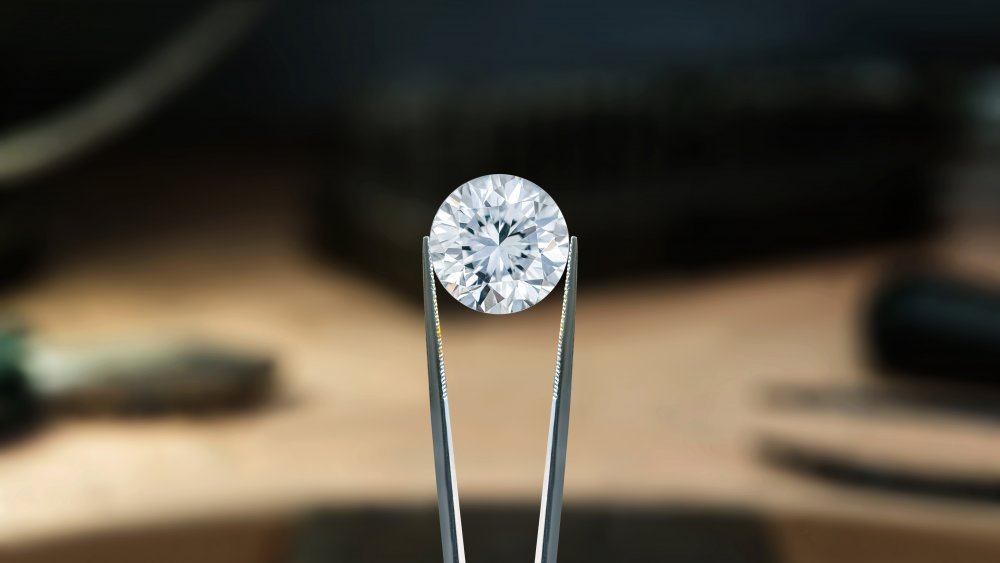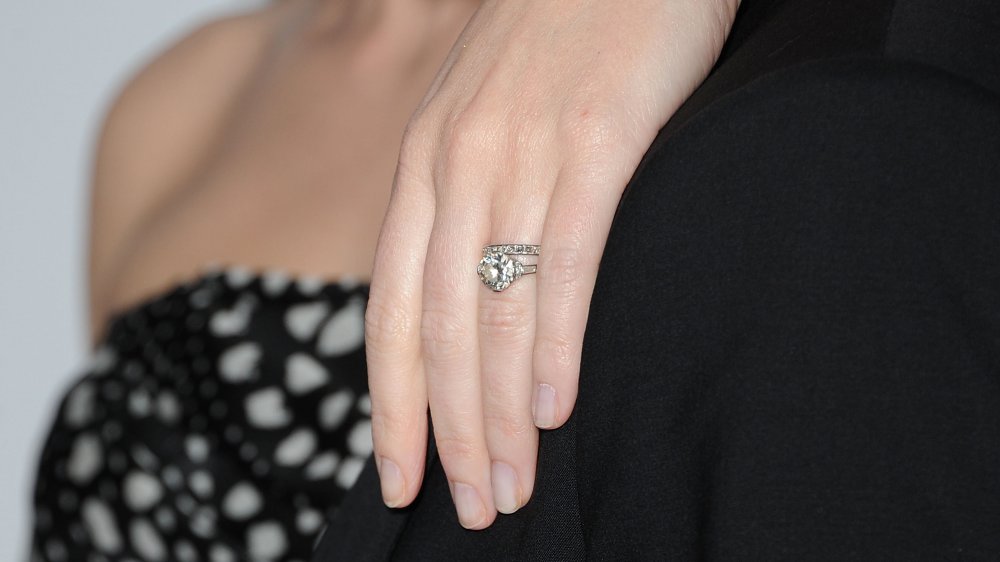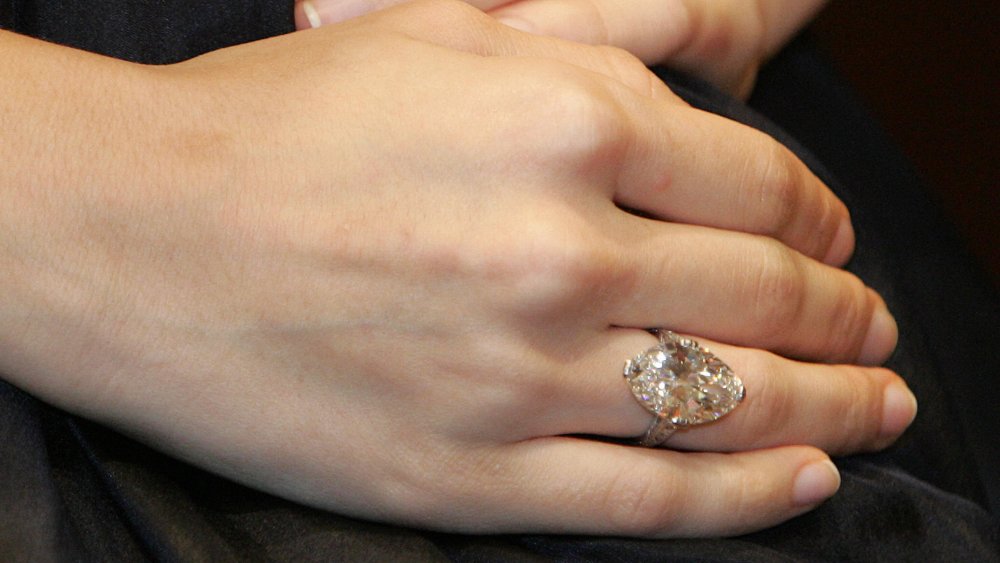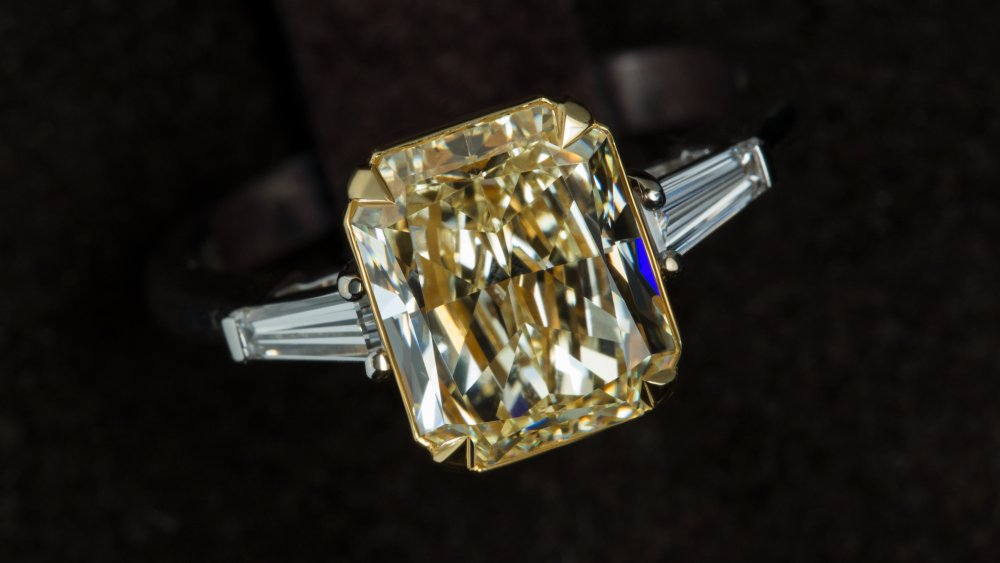Every Type Of Diamond Cut Explained
Finding the perfect diamond for your engagement ring can be a difficult, time-consuming task, which can often be plagued by many mistakes. For one, you have to think about the color, band, and general style. Do you want something classic? Or maybe vintage-inspired? Or how about dramatic and bold? With endless options, how do you even begin to go about choosing the perfect diamond to wear for all the years to come? And then there's the four C's: cut, clarity, color, and carat size.
While all are important aspects to consider, many jewelers consider diamond cut to be the most important. And, after learning about all the different cuts of diamonds available, you may just find that you naturally gravitate toward a specific style based on first instinct alone. Finding the diamond cut that fits your style best is the first step in finding a piece of jewelry that is truly you so, without further ado, let's figure out this diamond cut business, shall we?
Round-cut diamonds are a classic style
If it seems like almost every engagement ring you see features a round-cut diamond, it's because, according to The Knot, it's true: Round diamonds make up 75 percent of all diamonds sold in the world. In an interview with Vogue, Olivia Landau, a graduate of the Gemological Institute of America, jeweler, and founder of The Clear Cut, said, "A round brilliant is perfect for someone who wants a traditional look that will last through the ages; the brilliant faceting is also great for women looking for maximum sparkle."
According to jewelry retailer Brilliance, round-cut diamonds as we know them today were first crafted in 1919. The cut features a whopping 58 facets that are made using a precise mathematical formula to maximize shine, according to online jewelry retailer With Clarity. For evidence of this timeless sparkle, look no further than the rings of celebrities like Emily Blunt and Mila Kunis.
Princess-cut diamonds are multifaceted beauties
The princess-cut diamond, as seen on Hilary Duff's hand above, is the shape to choose if you're looking for the most bang for your buck. According to jewelry retailer Brilliance, the princess cut is one of the most popular choices for engagement rings. However, because jewelers use more of the rough diamond to make this cut — and thus waste less of the rough diamond — the price is considerably less expensive. Online jewelry retailer With Clarity noted that this also means the princess cut is better for the environment.
What's more, princess-cut diamonds can also feature up to 76 facets, which means like the round cut, shine and sparkle are maximized. What's not to love about an eco-conscious diamond that dazzles?
Where the round diamond is classic, the princess cut is modern. Women looking for engagement rings that have the intense sparkle of a round diamond but a more contemporary look often opt for the inverted pyramid shape of the princess cut, Vogue explained.
Oval-cut diamonds are in demand
Oval-cut diamonds are rising in popularity, according to Vogue, and for good reason. Jewelry retailer Brilliance stated that like round- and princess-cut diamonds, the oval shape is ideal because it features 58 facets that maximize sparkle. However, oval diamonds happen to look bigger than round ones, so you can often purchase a lesser-carat oval diamond that looks just as large as a higher-carat round one.
Online jewelry retailer With Clarity explained that oval diamonds are one of the most flattering shapes, making fingers look long and slender. Despite its trendy yet timeless appeal, the oval-cut diamond was only created in 1957, according to Brilliance. Because these dazzlers aren't as common as their princess- or round-cut cousins, they appeal to women who are looking for something a bit unique, according to the Capetown Diamond Museum. As Glamour reported, celebs from Kirsten Dunst to Hailey Bieber to even Kate Middleton, as pictured above, have taken to the brilliant trend.
Cushion-cut diamonds are always on trend
Though the cushion-cut diamond may seem new and trendy, it's actually one of the oldest cuts in history, according to jewelry retailer Brilliance. The style, which is a square shape with rounded corners, dates back to the 1700s, per the Gemological Institute of America (GIA), and was once known as the "mine cut."
Olivia Landau, jeweler and founder of The Clear Cut, told Vogue cushion cuts "are perfect for someone searching for a soft look with a lot of sparkles." Though it may look similar to the princess cut, cushion-cut diamonds have a softer, rounder edge, perfect for someone who loves a square shape but doesn't like the princess cut's severe edges.
The Knot noted that cushion-cut diamonds callback to another time, so women who love antiques and vintage jewelry may gravitate towards this shape. That makes sense when you consider that, per Brilliance, some of the world's most famous diamonds are in this shape, like the allegedly cursed Hope Diamond.
Emerald-cut diamonds radiate elegance
Emerald cut diamonds may not sparkle as much as round- or princess-cut diamonds, but they're the perfect shape for someone who is looking for a diamond that is a little more subtle. According to jewelry retailer Brilliance, emerald-cut diamonds have clean lines and lend themselves to showing off their startling clarity.
Olivia Landau, jeweler and founder of The Clear Cut, told Vogue, "Emerald cuts exude elegance and refinement. The elongated shape and step-cut faceting is great for someone on the more understated side." The Gemological Institute of America (GIA) further revealed that emerald-cut diamonds are extremely versatile and can look modern or antique, depending on their setting. And because they're so easily customizable, emerald-cut stones can really be tailored to the person who wears them. The fact that they're such a popular choice today but have been around since the 16th century proves just how timeless emerald-cut diamonds really are.
Pear-cut diamonds weren't always popular
Though the unique shape of the pear-cut diamond may seem modern to its core, it's one of the oldest diamond shapes out there having been created in the 1400s, according to jewelry retailer Brilliance. However, when it was first introduced to the world, it received a very lukewarm welcome because, according to Brilliance, making pear-cut diamonds requires losing a large portion of the original rock.
When Richard Burton purchased a massive pear cut diamond for Elizabeth Taylor in the 1960s, though, the pear-cut diamond's potential was finally realized. The truly unique style combines some elements of other cuts but looks vastly different, which hints that pear-cut fans are ones "who move to the beat of their own drum and don't want a ring like everyone else," jeweler and The Clear Cut founder Olivia Landau told Vogue. Though sometimes used in engagement rings, Brilliance noted that pear cuts are often seen set in necklaces or earrings.
Marquise-cut diamonds are chic and edgy
The slim and unique shape of marquise-cut diamonds are perfect for women who prefer to go against the status quo. While these stones may look edgy or off the cuff compared to the more popular round cut, marquise-cut diamonds date back centuries. According to jewelry retailer Brilliance, the origin of the marquise diamond is quite romantic. In the early 1700s, King Louis XV commissioned a diamond that mirrored the shape of his mistress' lips.
Online jewelry retailer With Clarity noted that marquise diamonds are typically sought after by brides unconcerned with tradition and are perhaps looking for something unique in a sea of dazzling round or princess diamonds. While other diamond shapes are inherently contemporary, the marquise cut can be easily adapted to suit the personality of its wearer. A vintage band or elaborate side stones could evoke an antique appearance whereas a solitaire marquise looks edgy and new.
Asscher-cut diamonds have a vintage look
For women who love a vintage-inspired look, the Asscher cut, named after the Asscher brothers, is the perfect diamond. According to online jewelry retailer With Clarity, the Asscher cut came about in the early 1900s, but it didn't really become popular until the 1920s, which is why women who love the elegance and glamour of the '20s might gravitate towards this style of diamond.
Though the style rose in popularity during the flapper era, World War II threatened to destroy the Asscher diamond entirely, according to jewelry retailer Brilliance. Interestingly, the Asscher-cut diamond we see today didn't actually come about until 1999, as With Clarity reported. It was during that year that the Royal Asscher Cut was created, improving upon the faults of the earlier Asscher design and leading to a resurgence in popularity.
Olivia Landau, jeweler and founder of The Clear Cut, told Vogue, "Asscher cuts have an old world sophistication. Women who love antiques and unique designs tend to gravitate more toward Asscher cuts for their retro look." While the Asscher cut may look similar to princess or cushion cuts, if you favor an antique look, an Asscher cut diamond is clearly the way to go.
Heart-cut diamonds make a statement
The heart is perhaps one of the clearest symbols of love in existence. As a diamond, the heart cut is uncommon. However, a few celebrities have worn them, including Lady Gaga, Elizabeth Taylor, and Nicki Minaj, as jewelry retailer Brilliance highlighted. Wearing a heart-shaped diamond is truly a bold choice, though it's definitely not a new trend.
According to Brilliance, heart-shaped diamonds date back to the 15th century, though the cut may be better known for its 16th century appearance — when Mary, Queen of Scots, gifted her cousin, Queen Elizabeth I, a heart-cut diamond. The Capetown Diamond Museum noted that the heart-cut diamond had once been reserved for royals as its uncommon shape meant that only the most skilled craftsmen could accurately create the diamond. This is true even today. The museum further stated that purchasing a heart-cut diamond can be extremely tricky, as the buyer must be sure the stone is perfectly symmetrical, a difficult feat for a jeweler to achieve.
Radiant-cut diamonds are great for women who want to sparkle
True to its name, radiant-cut diamonds are perfect for women who want maximum shine. According to jewelry retailer Brilliance, radiant-cut diamonds have risen to popularity in a surprisingly short amount of time, having only been around since the late '70s. Brilliance further explained that the radiant-cut diamond was designed in an effort to take the best parts of the emerald and round cuts and put them into a single stone.
While emerald-cut stones maximize clarity, round stones maximize sparkle, so combining those two elements would, in theory, create a truly dazzling piece of jewelry. Brilliance noted that though the radiant cut may look like a cushion cut at first glance, closer inspection reveals the startling amount of facets that amplify sparkle. The Clear Cut founder and jeweler Olivia Landau told Vogue of radiant-cut diamonds: "The brilliant faceting and rectangular shape is great for those who love a lot of sparkle and flash!"
Baguette-cut diamonds compliment other diamond shapes
Though they may appear to be emerald-cut stones at first glance, baguette-cut diamonds are extremely different and serve an entirely different purpose than emerald cuts. According to Brides, baguette diamonds feature just 14 facets in their long, rectangular shape. Olivia Landau, jeweler and founder of The Clear Cut, told the publication, "You will usually find baguettes flanking a larger center diamond in a three-stone ring." So while they're not typically the center stone that stops people in their tracks, baguette diamonds are the perfect shape to complement those scene-stealing cuts.
When shopping for other cuts, the number of facets might be the first thing you look for, but with baguette diamonds the most important factor is the stone's clarity. Brides noted that baguette diamonds are prone to showing imperfections more so than cuts with many facets. Because they're less dazzling than other cuts, baguettes as side-stones are perfect for adding a touch of vintage elegance to whatever center stone you choose.











